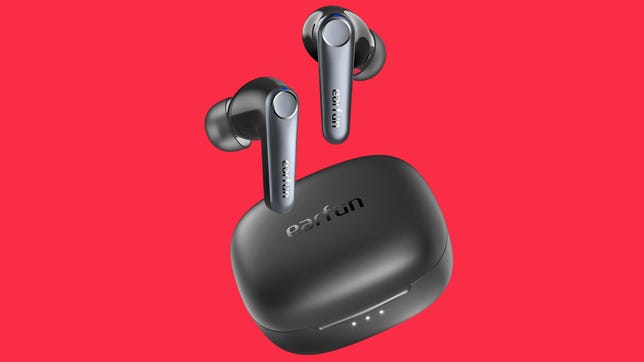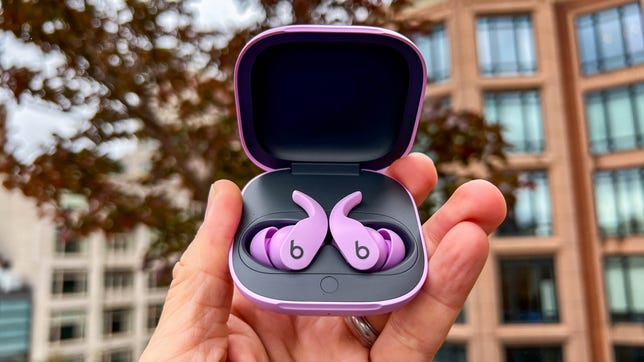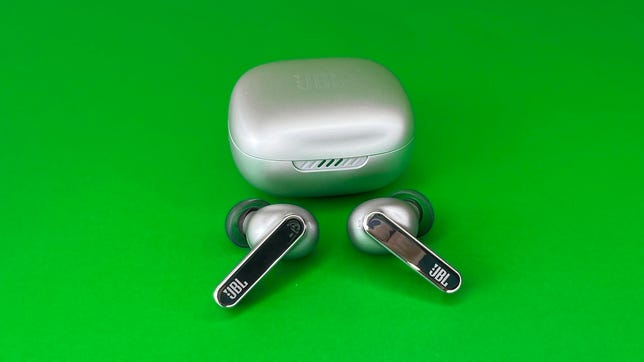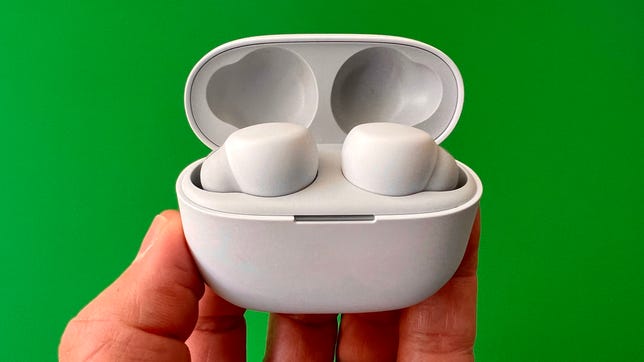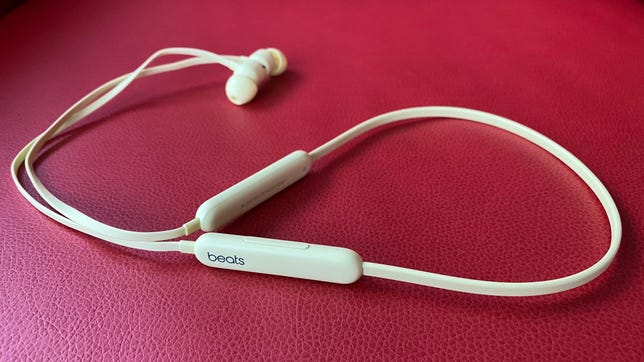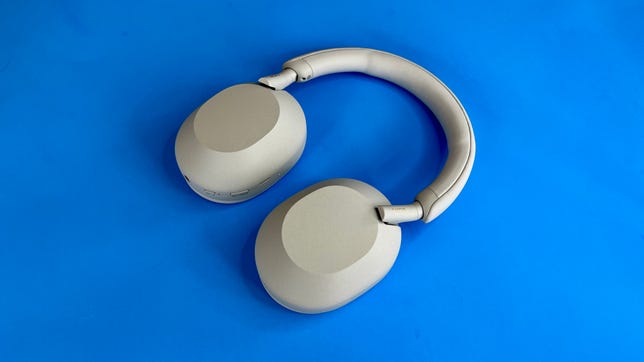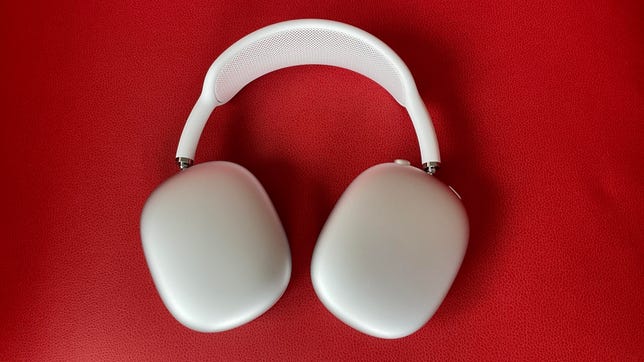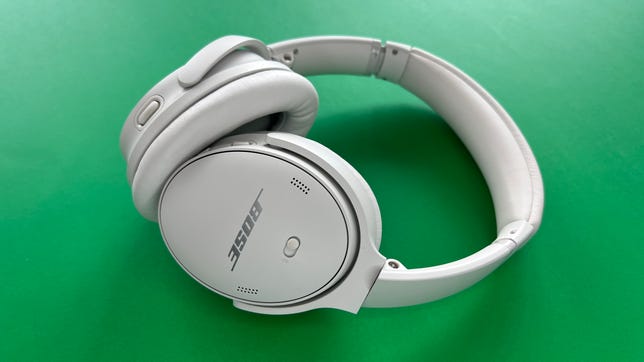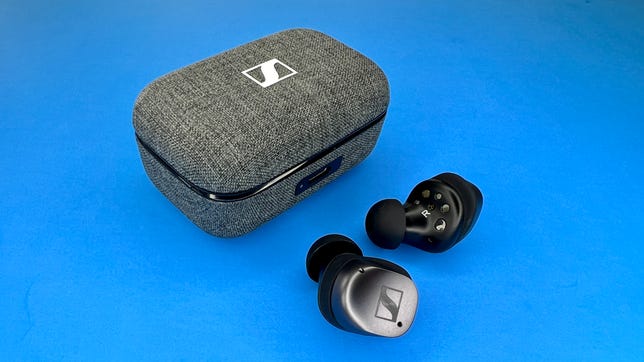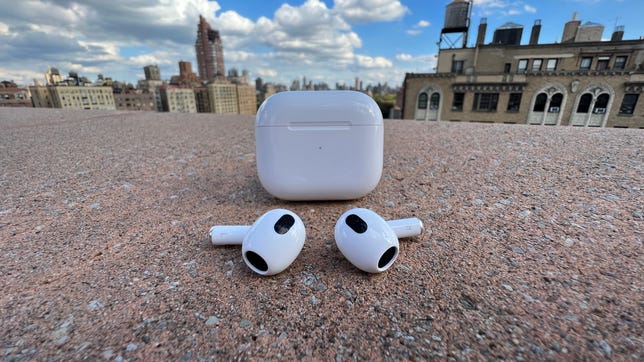Technologies
Best Wireless Headphones and Earbuds for iPhone 12
Need a swanky new pair of the best earbuds for iPhone? We’ll run through all the top options.

Sure, you can buy an adapter to use wired headphones with your iPhone 12 or any of the latest iPhones, including the iPhone 13 and iPhone 14, that don’t have a headphone jack. But most people are looking for a pair of wireless earbuds or headphones to use with their new iPhone, whatever model it may be.
As we’re all quite aware, Apple offers buds and headphones under its own brand and its Beats brand (yes, Apple owns Beats), and we’ve included the AirPods 3, AirPods Pro 2 and Beats Fit Pro on this list, but there are plenty of non-Apple-branded Bluetooth headphones and earbuds that work really well with iPhones, as well as other Apple devices and non-Apple devices, including Android smartphones and tablets.
For those looking for more budget AirPods alternatives, we’ve got a list of the best cheap earbuds and five true wireless earbuds worth buying for under $40.
Battery Life
Rated up to 6 hours
Noise Canceling
Yes (ANC)
Multipoint
No
Headphone Type
Wireless earbuds
Water-Resistant
Yes (IPX4 — splash-proof)
The new AirPods Pro (2nd generation) are powered by Apple’s new H2 chip, which delivers more processing power while being more energy efficient, according to Apple. The new chip, combined with new low-distortion drivers, allows for improved sound that offers better clarity and depth. The noise canceling is also improved — Apple says the new AirPods have «double» the noise canceling of the original AirPods Pro. Additionally, the new AirPods add an extra hour of battery life, up from five to six hours with noise canceling on. Plus, a speaker in the case that emits a sound that helps locate your buds via Find My should they decide to hide from you.
Earfun has put out a series of wireless earbuds over the last couple of years with one important commonality: They’re very good values, made more so by frequent discounts. The company’s new-for-2023 Earfun Air Pro 3 earbuds feature the latest Qualcomm QCC3071 system-on-a-chip with aptX Adaptive for Android and other devices that support the new LE Audio standard and LC3 audio codec, which is superior to the SBC codec (they also support AAC for Apple devices).
Lightweight and comfortable to wear — I got a good seal with the largest ear tip size — these aren’t a huge upgrade over the Earfun Air S, but they are better. They have slightly larger wool-composite drivers (11mm versus 10mm), slightly improved noise canceling and better battery life (up to seven hours with noise canceling on, according to Earfun).
In short, the Earfun Air 3 deliver strong performance for their modest price, with robust bass, good clarity and a relatively wide soundstage. They also pack in a lot of features, including a wireless charging case and «multidevice» connectivity. (I could pair them to two devices simultaneously but had to pause the music on one device and hit play on the other for the audio to switch.) They’re IPX5 splash-proof and also work well (though not exceptionally well) as a headset for making calls.
Note that after you activate the instant 10%-off coupon at Amazon, adding the code EAP3CNET at checkout gives you an additional 20% off, bringing the buds’ price down to $56.
While the Beats Fit Pro (on sale for $160) technically aren’t AirPods, they’re built on the same tech platform as the AirPods Pro (yes, Apple owns Beats). Unlike Beats’ earlier and less expensive Studio Buds, the Beats Fit Pro include Apple’s H1 chip and have most of the AirPods Pro’s features, including active noise canceling, spatial audio and Adaptive EQ. I’d venture to call them the sports AirPods you’ve always wanted. And for some people, they might just be better than the AirPods Pro.
Over the years, JBL has put out some decent true-wireless earbuds, but nothing that really got me too excited. That’s finally changed with the arrival of the Samsung-owned brand’s new Live Pro 2 and Live Free 2 buds. Both sets of buds — the Live Pro 2 have stems while the Live Free 2 have a pill-shaped design — offer a comfortable fit along with strong noise canceling, very good sound quality and voice-calling performance, plus a robust set of features, including multipoint Bluetooth pairing, an IPX5 splash-proof rating and wireless charging.
The Live Pro 2 and Live Free 2 are equipped with the same 11mm drivers, six microphones, oval tubes and oval silicon tips. Aside from the design, the biggest difference between the two buds is battery life; the stemless Live Free 2 is rated for up to seven hours, while the Live Pro 2 is rated for 10 hours. The Live Pro 2 is available in four color options.
Battery Life
Rated up to 9 hours
Noise Canceling
Yes (ANC)
Multipoint
No
Headphone Type
Wireless Earbuds
Water-Resistant
Yes (IPX4 — splash-proof)
Unlike the «open» LinkBuds, the LinkBuds S are traditional noise-isolating earbuds with tips you jam in your ears. They’re more compact and lighter than Sony’s flagship WF-1000XM4 and also feature Sony’s V1 processor. While their sound and noise canceling don’t quite measure up to the XM4’s, they’re close and cost less. They’re the Sony buds for people who can deal with larger buds like the XM4 but want 80 to 85% of those buds’ features and performance for $80 less.
Battery Life
Rated up to 12 hours
Noise Canceling
No
Multipoint
No
Headphone Type
Wireless earbuds
Water-Resistant
No IP rating
I didn’t think I’d ever see a version 2.0 of Beats’ once-popular BeatsX neckband-style wireless earphones, but it’s arrived with a new name — the Beats Flex — and a much-cheaper $50 price tag, which is half of what its predecessor had been selling for.
The Flex instantly becomes an affordable, Apple-friendly wireless alternative to the AirPods, which start around $100 for the standard version with a wired charging case (but will be selling for as low as $99 this holiday season). The good news is they sound better than both the original BeatsX and standard AirPods. They also work well for making calls and have better battery life than the original. The bad news? The design is passe in a world now dominated by true wireless earbuds.
They’re available in black or yellow at launch, with gray and light blue arriving in early 2021.
Battery Life
Rated up to 32 hours
Noise Canceling
Yes (ANC)
Multipoint
Yes
Headphone Type
Over-ear wireless headphones
Water-Resistant
No IP rating
When you have a product that a lot of people love, change can be risky. Such is the case for Sony’s WH-1000XM5, the fifth generation of the 1000X series headphones, which were first released in 2016 as the MDR-1000X Wireless and have become increasingly popular as they’ve improved with each generation. Over the years, Sony has made some tweaks to the design, but nothing as dramatic as what it’s done with the WH-1000XM5. Other than the higher $349 price tag most of those changes are good, and Sony’s made some dramatic improvements with voice-calling performance as well as even better noise canceling and more refined sound.
Battery Life
Rated up to 20 hours
Noise Canceling
Yes (ANC)
Multipoint
No
Headphone Type
Over-ear wireless headphones
Water-Resistant
No IP rating
Yes, they’re expensive, but the AirPods Max deliver richer, more detailed sound than lower-priced competitors from Bose and Sony. They also feature arguably the best noise canceling on the market along with premium build quality and Apple’s virtual surround spatial audio feature for video watching. While they’re heavy, they manage to be surprisingly comfortable, though I did have to adjust the mesh canopy headband to sit a little more forward on my head to get a comfortable secure fit when I was out walking with them. They should fit most heads well, but there will be exceptions.
Battery Life
Rated up to 25 hours
Multipoint
Yes
Headphone Type
Over-ear wireless headphones
Water-Resistant
No IP rating
The QuietComfort 45 has virtually the same design as its predecessor, the QuietComfort QC35 II, which many people considered one of the most comfortable over-ear headphones — if not the most comfortable. It has the same drivers, according to Bose, and the buttons are in the same place. However, there are small but notable changes. First off, these thankfully have USB-C instead of Micro-USB.
Secondly, the microphone configuration is different. Not only have the mics been shifted on the headphones, but there’s now an extra external microphone for voice pick-up, which means the QC45 has a total of six microphones, four of which are beamforming and used for voice. By contrast, the QC35 II has a total of four, two of which are used for voice. (The Bose Noise Canceling Headphones 700 also have six microphones total.)
These headphones are excellent for making calls. They’re similar to the Bose Headphones 700 in that regard. They also include top-notch noise canceling and multipoint Bluetooth pairing, so you can connect them with a PC and your phone simultaneously. Read our Bose QuietComfort 45 review.
Featuring excellent sound, improved noise canceling and voice-calling performance as well a smaller, more refined design that includes stabilizing fins (so the earbuds stay in your ears more securely), the Sennheiser Momentum True Wireless 3 are among the best new true-wireless earbuds for 2022. They’re also one of the best true-wireless earbuds overall, giving the Sony WF-1000XM4 a run for the money.
Battery Life
Rated up to 6 hours
Noise Canceling
No
Multipoint
No
Headphone Type
Wireless earbuds
Water-Resistant
Yes (IPX4 — splash-proof)
Take one look at the new design of the third-gen AirPods ($179), and the first thing you’ll probably think is: «Those look like the AirPods Pro without ear tips.» You wouldn’t be wrong. While they’re more fraternal than identical twins, the AirPods 3 are shaped like the AirPods Pro, with the same shorter stems and same pinch controls as those of the Pro. Aside from the design change, which should fit most ears better than the AirPods 2nd Generation (though not very small ears), the biggest change is to the sound quality: It’s much improved. Also, battery life is better, and the AirPods 3 are officially water-resistant.
More headphone recommendations
- Best Open Wireless Earbuds That Aren’t AirPods
- Best Wireless Earbuds and Headphones for Making Calls
- Best Wireless Headphones for Working at Home in 2023
- Best Noise-Canceling True Wireless Earbuds of 2023
- Best Headphones for Running
- Best On-Ear Headphones for 2023
- Best Workout Headphones in 2023
- Best Over-Ear Headphones of 2023
- Protect Your AirPods: 5 Cases Under $15
- Best Sony Headphones for 2023
Technologies
Today’s NYT Mini Crossword Answers for Wednesday, Oct. 29
Here are the answers for The New York Times Mini Crossword for Oct. 29.
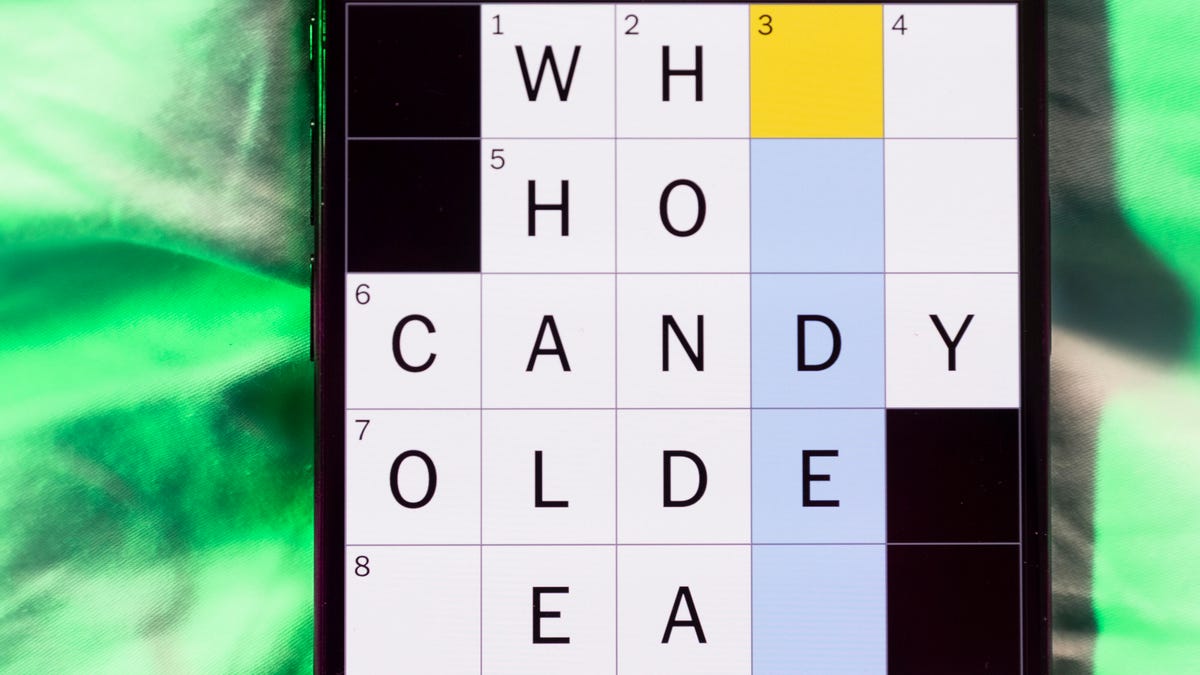
Looking for the most recent Mini Crossword answer? Click here for today’s Mini Crossword hints, as well as our daily answers and hints for The New York Times Wordle, Strands, Connections and Connections: Sports Edition puzzles.
Need some help with today’s Mini Crossword? It’s a bit trickier than normal, so read on for the answers. And if you could use some hints and guidance for daily solving, check out our Mini Crossword tips.
If you’re looking for today’s Wordle, Connections, Connections: Sports Edition and Strands answers, you can visit CNET’s NYT puzzle hints page.
Read more: Tips and Tricks for Solving The New York Times Mini Crossword
Let’s get to those Mini Crossword clues and answers.
Mini across clues and answers
1A clue: Skill taught at lifeguard training, for short
Answer: CPR
4A clue: Bop it!
Answer: HEAD
6A clue: Not given anything to eat
Answer: UNFED
8A clue: Twist it! Pull it!
Answer: TAFFY
9A clue: Best of the best
Answer: ELITE
Mini down clues and answers
1D clue: Means of getting trash to a basement dumpster
Answer: CHUTE
2D clue: Word that can precede «code» or «colony»
Answer: PENAL
3D clue: «Baby Beluga» musician
Answer: RAFFI
5D clue: Neatly skillful
Answer: DEFT
7D clue: Change the color of, as hair
Answer: DYE
Technologies
Samsung’s Wild-Looking Tri-Fold Phone Debuts at APEC Summit in South Korea
The Galaxy phonemaker showed off a twin-hinged foldable at a Korean consumer tech show.
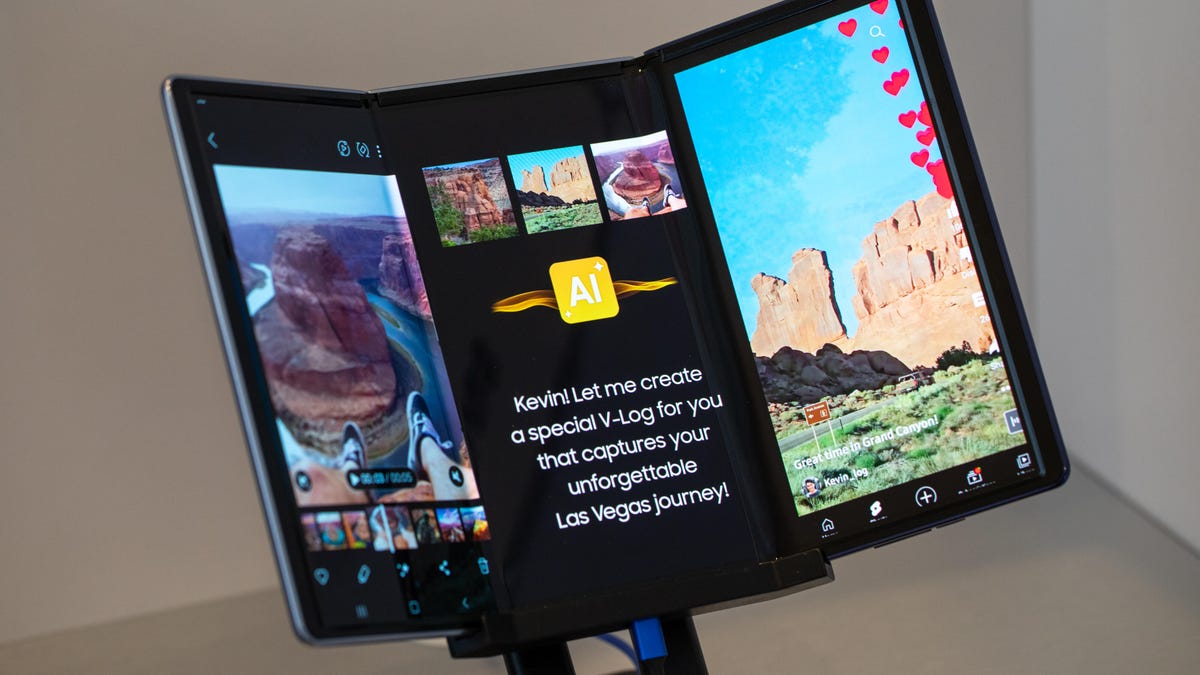
Samsung unveiled its first triple-display foldable phone for consumers at a tech exhibition hall during the APEC CEO Summit in South Korea. The Korean publication Dailian reported that the new phone will launch in November or December.
The tri-fold phone, which doesn’t have an official name yet, was revealed as a prototype on display. Whereas the Galaxy Z Fold 7 and Galaxy Z Flip 7 fold in half along one hinge, Samsung’s next device folds in two places to be as compact as a typical smartphone with a 6.5-inch outer screen, then unfolds for a tablet-size 10-inch screen, according to The Chosun Daily. Compare that with dual-screen foldables that have inner screens measuring approximately 8 inches. The Z Fold 7 has a single crease on its main screen; the new tri-fold could have two creases.
Samsung has been at the forefront of foldable phones since releasing the first Galaxy Fold in 2019 and the Galaxy Z Flip in 2020. At the time, it faced fierce competition from Motorola and Huawei — the latter of which gained a significant lead in 2024 with its own tri-fold Huawei Mate XT, which was followed by a second version. Samsung’s launch of its own competitor keeps the company in the game.
Here’s your first look at the Samsung Galaxy Z TriFold.
Screen when folded: 6.5-inch
Screen when unfolded: 10-inch
It might be announced later this week.
Source: Chosun Media pic.twitter.com/EhT4i1hW2k— Trakin Tech English (@trakinenglish) October 28, 2025
These two consumer tri-folds have their differences. The Huawei Mate XT’s two hinges fold in opposite directions like an accordion, giving it a Z shape, while Samsung’s device has two screens that fold inward in what Dailian (through Google Translate) asserts is «G-shaped.» Given that Samsung has branded its foldable line as the Z-series, it’s ironic that the company didn’t adopt that shape and format for its tri-fold.
Samsung didn’t release any more details about its tri-fold, though Dailian expects it to be even pricier than the Galaxy Z Fold 7, which starts at $2,000in the US. From photos of the device — apparently a prototype — behind glass, you can see a front-facing camera on the inner display (when unfolded) and outer screen (when folded up). But since Samsung also didn’t show the device folding, there are a lot of questions about its durability and capability before its supposed launch in a month or two.
It’s not a total surprise to see Samsung’s tri-fold ready to go. For years, the company has displayed various flexible display designs, including three-screen formats, during CES. In the last few months, there’s been a steady flow of rumors and outright executive confirmations that Samsung was gearing up to unveil its tri-fold. Now we’ll have to see whether the company that’s fought so hard to be at the forefront of smartphone design can release another format that dominates the folding phone niche — all before one of its biggest rivals, Apple, even releases its first foldable.
Samsung didn’t respond to a request for comment.
Technologies
Be Wary of AI Videos as Hurricane Melissa Hits Jamaica. How to Spot a Fake
AI-generated storm videos are spreading rapidly online. Here’s where to find reliable information.

As Category 5 Hurricane Melissa bears down on Jamaica with winds topping 180 mph, social media is being hit by a surge of AI-generated and misleading videos, showing catastrophic flooding, collapsing buildings and rescue scenes that never happened.
Across X, TikTok, Instagram, WhatsApp and other social media platforms, fake clips spread quickly, racking up millions of views in hours. Many of these videos are spliced footage from past storms or clips created entirely with text-to-video AI tools.
In times of crisis, like a dangerous and imminent natural disaster, these fake videos can create confusion, panic and distraction at a time when accuracy can be life-saving.
Natural disasters have always bred rumors and recycled footage, but the rise of AI-generated video has supercharged the problem. Tools like OpenAI’s Sora and other AI-video platforms can render realistic-looking images of storms, floods and damage scenes in seconds, reaching millions online in just a few hours.
Read also: The Deepfakes Are Winning. How Can You Tell if a Video Is Real or Sora AI?
Don’t miss any of our unbiased tech content and lab-based reviews. Add CNET as a preferred Google source.
Why storms are a magnet for fake news
Storms are visual, emotional and fast-moving, which is the perfect recipe for viral misinformation. In years past, videos were often taken out of context or labeled as a different storm. Now, they can be digitally fabricated from scratch.
Some depict apocalyptic flooding that hasn’t occurred, while others claim to show «real-time» conditions hours before landfall. Several videos that have circled this week include images of sharks swimming in the storm surge and unsettling depictions of human suffering.
False videos like these can exaggerate the danger of the storm, create panic, undermine trust and distract emergency responders, as misinformation pulls attention from verified reports.
The following three videos are all fake. They are labeled (albeit briefly) with the Sora watermark, which indicates they were made in OpenAI’s video generator.
How to separate truth from fiction online
When social feeds fill with dramatic hurricane clips, it’s important to separate truth from fiction.
«You have to be very discerning,» Senator Dana Morris Dixon, Jamaica’s information minister, said. «You have to know what is good information from bad information. If you want to know where the storm is going, if you want to know what to do, you need to look for official sources.»
Dixon highlighted that the Jamaica Information Service, Office of Disaster Preparedness and Emergency Management’s information sites and the Office of the Prime Minister page are resources for legitimate, timely updates.
Here are some ways to be discerning.
Check the source. If the video comes from an unfamiliar account, lacks a timestamp or carries no recognizable media branding, assume it is fake until verified. Also, look for the Sora watermark indicating it was made in OpenAI’s app, or read the comments to see if someone else has flagged the video as fake.
Ask yourself if it’s new and local. Does the geography match Jamaica? Is the footage recent? Many «Melissa» clips could actually be from past Caribbean or Gulf storms.
Cross-check before believing. Confirm through trusted outlets, like the Meteorological Service of Jamaica and the US National Hurricane Center, or established media like the BBC, Reuters or the Associated Press.
Pause before sharing. A viral video can cause harm if it spreads misinformation. Wait until a credible source verifies it before reposting.
Go local. If you’re in the affected area, rely on local emergency agencies, radio stations and city or county-level officials for evacuation and safety updates.
Monitor official alerts. For real-time instructions, stick with government channels and local emergency feeds. Your safety depends on accurate information, not viral content.
As AI-generated media becomes easier to produce, hurricanes like Melissa offer a preview of a new reality: one in which you can’t trust much of the information you see online.
Staying safe means being skeptical and diligent when looking for accurate and even lifesaving news.
Read also: What Is AI Slop? Everything to Know About the Terrible Content Taking Over the Internet
-

 Technologies3 года ago
Technologies3 года agoTech Companies Need to Be Held Accountable for Security, Experts Say
-

 Technologies3 года ago
Technologies3 года agoBest Handheld Game Console in 2023
-

 Technologies3 года ago
Technologies3 года agoTighten Up Your VR Game With the Best Head Straps for Quest 2
-

 Technologies4 года ago
Technologies4 года agoVerum, Wickr and Threema: next generation secured messengers
-

 Technologies4 года ago
Technologies4 года agoBlack Friday 2021: The best deals on TVs, headphones, kitchenware, and more
-

 Technologies4 года ago
Technologies4 года agoGoogle to require vaccinations as Silicon Valley rethinks return-to-office policies
-

 Technologies4 года ago
Technologies4 года agoOlivia Harlan Dekker for Verum Messenger
-

 Technologies4 года ago
Technologies4 года agoiPhone 13 event: How to watch Apple’s big announcement tomorrow


